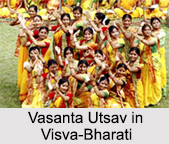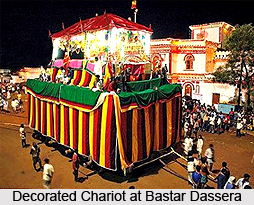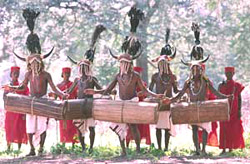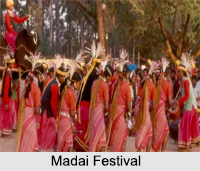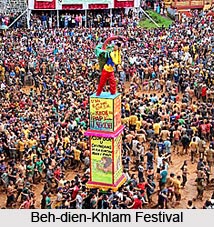 Meghalaya Temple Festivals attract almost all the tribal communities of northeast India. The people of Meghalaya observe some important festivals throughout the year within its ancient temples. These celebrations usually take the form of dances, when people get an opportunity to forget the drudgery of life. Many of these festivals have religious associations but a few of the celebrations are apparently secular.
Meghalaya Temple Festivals attract almost all the tribal communities of northeast India. The people of Meghalaya observe some important festivals throughout the year within its ancient temples. These celebrations usually take the form of dances, when people get an opportunity to forget the drudgery of life. Many of these festivals have religious associations but a few of the celebrations are apparently secular.
Important temple festivals of Meghalaya
Just like the natural beauty of the state, temple festivals of Meghalaya reflect the amazing tribal culture of the natives. These festivals not only celebrate different occasions but mirror the life of the people in this region.
Wangala festival
A very important Meghalaya Temple Festival among the Garos is the Wangala festival. This is a harvest festival held in honour of Saljong, the Sun God of fertility. This festival marks the end of a period of toil, which brings good yield of the fields. This Meghalaya Temple Festival marks the time to relax and for days the hills and valleys resonate with the typical beat of drums. The dance related to this festival, itself has certain delicate variations, the main decoration being a queue of two parallel lines. Young and old join the Meghalaya temple festivities with equal joviality. While the men beat drums, the line of dancers moves forward in rhythmic harmony.
Shad Nongkrem
A very important and elaborate festival among the Khasis is the Shad Nongkrem (Nongkrem dance) held annually at Smit, the capital of the Khyrem Syiemship near Shillong. This festival is often celebrated near popular temples. An important part of this festival is Pomblang or sacrifice of goats. This sacrifice and offerings are made to the ancestor of the ruling clan to the deity of Shillong peak. Religious part of the festival precedes dances, in which unmarried girls in all their finery participate.
Shad Suk Mynsiem
A counterpart of the Garo tribe, celebrate their religious harvest festival - the Shad Suk Mynsiem or the `dance of Contentment`. This is celebrated in April at the religious grounds near Shillong and at other places.
Beh-dien-Khlam
Among the Pnars, the most celebrated Meghalaya Temple Festivals is the Beh-dien-Khlam. This festival marks the event of chasing away the Demon of Cholera. Early on the first day, young men go round the village knocking on gatepost of individual houses. The climax of the celebration is the fight for a large undressed beam by two groups of people in resistance to each other. This involves getting this heavy beam across a muddy ditch called Wah-eit-nar. A lot of horseplay enters into this part of the proceedings when the participants generously smear mud on each other. This celebration held at Jowai, a well known Temple in Meghalaya.
Shad Sukra
This festival is also celebrated by the Jaintia clan. This festival is also celebrated prior to the sowing season; in mid-April or May. The Pnar people seek the blessing of their deity for good produce and pray for the protection of their crops from all the natural calamities. Rituals and dance are accompanied by the drums and the flute, with women and men dressed in their traditional dresses.
Ka Pom-Blang Nongkrem
For five days Khasi people celebrate Ka Pom-Bland Nongkrem festival as a thanksgiving for harvest in the months of October or November. The dancers along with village community pray for peace and prosperity

